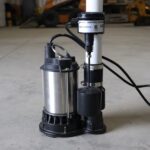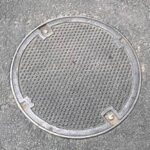Smoke alarms, often overlooked and underestimated, are the unsung heroes that safeguard our homes and loved ones from the devastating impact of fires. These unassuming devices, with their simple yet effective design, play a crucial role in alerting us to potential dangers and giving us the precious seconds needed to escape harm’s way. In this article, we’ll delve into the importance of smoke alarms, how they work, the different types available, and essential maintenance practices to ensure their optimal functioning.
What is a Smoke Alarm?
A smoke alarm is a safety device designed to detect the presence of smoke particles in the air, indicating the potential presence of a fire. It is a crucial component of home and building safety systems, providing early warning to occupants by emitting a loud sound or visual signal when smoke is detected. Smoke alarms are typically installed in various locations throughout a structure to maximize their coverage and effectiveness in alerting individuals to the threat of a fire. They play a vital role in providing the necessary time for occupants to evacuate the premises or take appropriate actions to mitigate the fire risk. Fig. 1 below shows typical smoke alarms available in the market.

Why Smoke Alarms Matter
Fires can spread rapidly, engulfing entire homes within minutes. The harsh reality is that fires don’t discriminate – they can start in any home, regardless of its size or location. Smoke alarms act as a vigilant sentinel, detecting the earliest traces of smoke and issuing a life-saving warning that allows us to react swiftly. According to the National Fire Protection Association (NFPA), having working smoke alarms cuts the risk of dying in a home fire in half.
How Smoke Alarms Work
The brilliance of smoke alarms lies in their simplicity. Most smoke alarms consist of two main components: a sensor and an alerting mechanism. There are two primary types of smoke sensors: ionization and photoelectric. Ionization sensors are sensitive to small particles produced by fast-burning fires, while photoelectric sensors are better at detecting larger smoke particles from smoldering fires. Some advanced smoke alarms even combine both sensor types to provide comprehensive protection.
When smoke particles enter the alarm, they disrupt the normal electrical current flow within the sensor. This disturbance triggers the alerting mechanism, which can be a loud siren, flashing lights, or a combination of both. Modern smoke alarms may also come with additional features such as smartphone notifications or integration with smart home systems for real-time alerts.
Types of Smoke Alarms
There are several different types of smoke alarms available, each utilizing various technologies to detect smoke and provide early warnings of potential fires. The two primary types of smoke sensors used in these alarms are ionization and photoelectric sensors. Additionally, there are specialized smoke alarms designed for specific purposes. Here are the main types of smoke alarms:
Ionization Smoke Alarms:
- Ionization smoke alarms are designed to detect small smoke particles produced by fast-burning fires. These fires tend to have open flames and are characterized by a rapid release of heat.
- They contain a small amount of radioactive material that ionizes the air within a sensing chamber. When smoke particles enter the chamber, they disrupt the ionization process, triggering the alarm.
- These alarms are effective at detecting flames and are generally more responsive to flaming fires.
Photoelectric Smoke Alarms:
- Photoelectric smoke alarms are designed to detect larger smoke particles produced by smoldering fires, which may produce significant amounts of smoke before open flames develop.
- They use a light source and a photocell. When smoke enters the sensing chamber, it scatters the light onto the photocell, triggering the alarm.
- These alarms are effective at detecting smoldering fires and are generally more responsive to fires that produce a lot of smoke.
Dual-Sensor Smoke Alarms:
- Dual-sensor smoke alarms combine both ionization and photoelectric technologies. This provides a broader and more comprehensive smoke detection capability, making them effective at detecting a wide range of fire types.
- They offer increased sensitivity to both flaming and smoldering fires, offering enhanced protection.
Combination Smoke and Carbon Monoxide Alarms:
- These alarms are designed to detect both smoke and potentially deadly carbon monoxide (CO) gas. Carbon monoxide is a colorless, odorless gas that can be produced by malfunctioning fuel-burning appliances or vehicles.
- Combination alarms are especially important in homes with gas appliances, fireplaces, or attached garages, where the risk of carbon monoxide poisoning exists alongside the threat of fires.
Wireless Interconnected Smoke Alarms:
- These alarms communicate with each other wirelessly. When one alarm detects smoke, all interconnected alarms in the system will sound, providing comprehensive coverage throughout the building.
- Wireless interconnected alarms are especially useful in larger homes or multi-story buildings, ensuring that occupants are alerted regardless of their location within the structure.
Smart Smoke Alarms:
- Smart smoke alarms are connected to a home’s Wi-Fi network and can send alerts to smartphones or other smart devices.
- They often come with additional features such as remote monitoring, customizable alerts, and integration with smart home systems.
Battery-Powered Smoke Alarms:
These are the most common and cost-effective types. They rely on batteries for power and are relatively easy to install. However, regular battery checks and replacements are essential to ensure their effectiveness.
Hardwired Smoke Alarms:
These alarms are directly connected to the home’s electrical system and often come with a backup battery. They provide a consistent power source and are best suited for homes with multiple levels.
It’s important to choose the type of smoke alarm that best suits your specific needs and the characteristics of your living environment. Regardless of the type you choose, regular testing, maintenance, and battery replacement are crucial to ensuring the proper functioning of the smoke alarm and maximizing its life-saving potential.
Components of a Smoke Alarm
A smoke alarm consists of several components working together to detect the presence of smoke and provide an audible or visual warning to occupants. The exact components may vary slightly based on the specific type and model of the smoke alarm, but here are the main components commonly found in smoke alarms:
- Sensor Chamber:
- The sensor chamber is the heart of the smoke alarm. It contains smoke detection technology, such as an ionization or photoelectric sensor.
- In ionization sensors, this chamber contains a small amount of radioactive material that ionizes the air. In the photoelectric sensors, it houses a light source and a photocell.
- Smoke Detection Technology:
- Smoke alarms use either ionization or photoelectric technology, or a combination of both, to detect smoke particles in the air.
- Alarm Sounder:
- The alarm sounder produces a loud and distinctive sound when smoke is detected. The sound serves as a warning to occupants that a potential fire is present.
- Power Source:
- Smoke alarms are powered by batteries, electricity, or a combination of both.
- Battery-powered alarms use replaceable or sealed-in batteries.
- Hardwired alarms are directly connected to the electrical system of the building and may also have a backup battery.
- Test Button:
- The test button allows you to manually check the functionality of the smoke alarm. Pressing the button initiates a self-test of the alarm’s components, including the sounder.
- Reset Button:
- Some smoke alarms have a reset button that allows you to silence the alarm after a false alarm or when cooking smoke triggers the alarm.
- Visual Indicators:
- Some smoke alarms have flashing lights or LEDs that provide a visual indication when the alarm is triggered. This feature can be especially useful for individuals with hearing impairments.
- Mounting Bracket or Base Plate:
- The mounting bracket or base plate holds the smoke alarm in place on the ceiling or wall. It may also have a locking mechanism to secure the alarm.
- Interconnectivity:
- Some smoke alarms can be interconnected wirelessly or through wiring, allowing them to communicate with each other. When one alarm detects smoke, all interconnected alarms sound, providing comprehensive coverage throughout the building.
- Hush Feature:
- Many modern smoke alarms have a hush or silence feature that temporarily silences the alarm when non-emergency smoke triggers it, such as cooking smoke. This feature prevents nuisance alarms.
- Smart Features (optional):
- Smart smoke alarms can connect to a home’s Wi-Fi network and may offer remote monitoring, smartphone notifications, and integration with other smart home devices.
Maintaining Your Smoke Alarms
Owning a smoke alarm comes with the responsibility of regular maintenance to ensure its proper functioning:
- Test Monthly: Press the test button on your smoke alarm every month to confirm it’s operational.
- Change Batteries Annually: If your smoke alarm uses replaceable batteries, change them at least once a year. An easy way to remember is to do it when daylight saving time begins or ends.
- Vacuum Regularly: Dust and debris can accumulate within the alarm, affecting its sensitivity. Gently vacuum the alarm’s exterior to keep it clean.
- Replace Every 10 Years: Smoke alarms have a limited lifespan. Replace the entire unit every decade to ensure optimal performance.
What it Means if Smoke Alarms Beeping or Chirping
A smoke alarm that is beeping or chirping can indicate various situations, some of which may require immediate attention. The beeping sound is typically a warning signal meant to alert you to a potential issue with the smoke alarm itself, the battery, or the presence of smoke. Here are some common reasons why smoke alarms beep and what you can do about them:
- Low Battery:
- A frequent cause of beeping in smoke alarms is a low or weak battery. Many smoke alarms have a distinct beep pattern to indicate a low battery.
- Solution: Replace the battery with a fresh one. It’s recommended to use high-quality, long-lasting batteries to ensure the alarm’s reliability.
- A frequent cause of beeping in smoke alarms is a low or weak battery. Many smoke alarms have a distinct beep pattern to indicate a low battery.
- End-of-Life Warning:
- Smoke alarms have a limited lifespan, typically around 10 years. Some alarms beep to alert you that the device has reached the end of its useful life.
- Solution: Replace the entire smoke alarm with a new one to ensure continued protection.
- Smoke alarms have a limited lifespan, typically around 10 years. Some alarms beep to alert you that the device has reached the end of its useful life.
- Malfunction or Error:
- If the smoke alarm detects a malfunction or experiences an error in its internal components, it may emit a beeping sound to alert you to the issue.
- Solution: Follow the manufacturer’s instructions for troubleshooting the specific error. If the problem persists, replace the alarm.
- If the smoke alarm detects a malfunction or experiences an error in its internal components, it may emit a beeping sound to alert you to the issue.
- Interconnectivity Issues:
- If you have interconnected smoke alarms and one alarm is beeping, it may indicate a communication problem between the alarms.
- Solution: Check the interconnection wiring or wireless communication between alarms. Ensure that all alarms are properly connected and functioning.
- If you have interconnected smoke alarms and one alarm is beeping, it may indicate a communication problem between the alarms.
- Test Mode or Maintenance:
- Some smoke alarms beep during a test mode or maintenance cycle to indicate that they are functioning properly.
- Solution: Review the smoke alarm’s user manual to understand its test and maintenance procedures. If you initiated a test, wait for it to complete, and the beeping should stop.
- Some smoke alarms beep during a test mode or maintenance cycle to indicate that they are functioning properly.
- False Alarms:
- Cooking smoke, steam, or other airborne particles can trigger a false alarm and cause the smoke alarm to beep.
- Solution: Ventilate the area, clear the air of any smoke or particles, and use the alarm’s hush or silence feature if available.
- Cooking smoke, steam, or other airborne particles can trigger a false alarm and cause the smoke alarm to beep.
- Actual Smoke or Fire:
- Of course, the most critical reason for a smoke alarm to beep is the detection of smoke from an actual fire.
- Solution: If you hear a continuous, loud beeping, evacuate the building immediately and call emergency services.
- Of course, the most critical reason for a smoke alarm to beep is the detection of smoke from an actual fire.
Always take any beeping from a smoke alarm seriously. Investigate the cause promptly and take appropriate action based on the situation. Regular testing, maintenance, and understanding of your smoke alarm’s features can help prevent false alarms and ensure that the alarm functions properly when needed. If you’re unsure about the cause of the beeping, consult the smoke alarm’s user manual or contact the manufacturer for guidance.
What it Means: Smoke Alarms Go Off Randomly
When smoke alarms go off randomly, it can be a concerning and puzzling situation. Random activations of smoke alarms can be attributed to various factors, some of which may indicate a potential issue with the alarm itself, the environment, or external influences. Here are some possible explanations for smoke alarms going off randomly:
- Dust or Contaminants: Smoke alarms can be sensitive to dust, dirt, or other contaminants that accumulate within the sensor chamber. These particles can disrupt the sensor’s operation and trigger false alarms.
- Solution: Regularly clean the smoke alarm by gently vacuuming its exterior and sensor chamber. Avoid using cleaning products that could damage the sensor.
- Cooking Smoke: Cooking activities that produce smoke or steam, especially near the smoke alarm, can trigger false alarms. Smoke from the kitchen can easily reach the alarm and set it off.
- Solution: Use exhaust fans while cooking to help dissipate smoke and steam. Consider relocating the smoke alarm further away from the kitchen if false alarms persist.
- Humidity and Moisture: High humidity levels or moisture accumulation near the smoke alarm can interfere with its sensors and cause false activations.
- Solution: Ensure proper ventilation and address any sources of excess humidity. Consider using dehumidifiers if necessary.
- Insects or Pests: Insects, spiders, or pests may find their way into the smoke alarm and trigger false alarms by obstructing the sensor chamber.
- Solution: Regularly inspect and clean the smoke alarm to prevent the buildup of pests. Seal any cracks or gaps around the alarm to prevent entry.
- Interference from Other Devices: Some electronic devices, such as wireless routers or wireless home security systems, can potentially interfere with the smoke alarm’s signals and cause false activations.
- Solution: Position the smoke alarm away from potential sources of interference. Test the alarm’s functionality after repositioning it.
- Electrical Issues: Voltage fluctuations or electrical surges in the home’s wiring could impact the smoke alarm’s operation and trigger false alarms.
- Solution: If you suspect an electrical issue, consult an electrician to assess and address any wiring problems.
- Smoke Alarm Malfunction: In some cases, the smoke alarm itself may have a malfunction or defect that causes it to trigger false alarms.
- Solution: Test the smoke alarm according to the manufacturer’s instructions. If false alarms persist, consider replacing the alarm with a new, reliable unit.
- Aging or End of Life: Smoke alarms have a limited lifespan, typically around 10 years. As they age, they may become more prone to false alarms.
- Solution: Replace the smoke alarm if it has reached the end of its useful life. Regularly check the expiration date on the alarm and replace it accordingly.
If your smoke alarms continue to go off randomly despite addressing the potential causes mentioned above, it’s advisable to seek professional assistance. A qualified technician or electrician can help diagnose and resolve any underlying issues to ensure the proper functioning of your smoke alarms and maintain your home’s safety.
What it Means: Smoke Alarms Blinking Red
If your smoke alarm is blinking red, it could be indicating a specific issue that requires your attention. The blinking red light is usually a visual indicator that alerts you to a potential problem with the smoke alarm, the battery, or its functionality. Here are some possible explanations for a smoke alarm blinking red and what you should do in each case:
- Low Battery Warning:
- A blinking red light might indicate a low or weak battery in the smoke alarm.
- Solution: Replace the battery with a new one. Ensure you use a high-quality battery to maintain the alarm’s proper operation.
- A blinking red light might indicate a low or weak battery in the smoke alarm.
- End of Life Warning:
- Some smoke alarms have a built-in end-of-life warning indicator that blinks red to signal that the device has reached its recommended lifespan (typically around 10 years).
- Solution: Replace the entire smoke alarm with a new one to ensure continued protection.
- Some smoke alarms have a built-in end-of-life warning indicator that blinks red to signal that the device has reached its recommended lifespan (typically around 10 years).
- Malfunction or Error:
- A blinking red light could indicate a malfunction or error within the smoke alarm’s internal components.
- Solution: Follow the manufacturer’s instructions for troubleshooting the specific error. If the issue persists, consider replacing the alarm.
- A blinking red light could indicate a malfunction or error within the smoke alarm’s internal components.
- Tamper Alert:
- Certain smoke alarms may have a tamper alert feature that causes the light to blink red if the alarm has been tampered with or removed from its mounting bracket.
- Solution: Ensure the alarm is properly secured on its mounting bracket. If you didn’t intentionally remove the alarm, investigate further for any signs of tampering.
- Certain smoke alarms may have a tamper alert feature that causes the light to blink red if the alarm has been tampered with or removed from its mounting bracket.
- Power Source Issues:
- If your smoke alarm is hardwired and the red light is blinking, it could indicate a problem with the electrical power supply.
- Solution: Check the electrical connections and ensure the circuit breaker is not tripped. If necessary, consult an electrician for assistance.
- If your smoke alarm is hardwired and the red light is blinking, it could indicate a problem with the electrical power supply.
- Reset Required:
- Some smoke alarms may require a reset after certain events or errors, causing the red light to blink.
- Solution: Refer to the smoke alarm’s user manual for instructions on how to perform a reset.
- Some smoke alarms may require a reset after certain events or errors, causing the red light to blink.
It’s important to address the blinking red light on your smoke alarm promptly, as it’s indicating a potential issue that needs to be resolved. If you’re unsure about the cause of the blinking light, consult the smoke alarm’s user manual for guidance. Regular testing, maintenance, and timely battery replacement can help prevent issues and ensure that your smoke alarms are functioning as intended to provide the vital protection they’re designed for. If the blinking persists or you’re uncertain about how to proceed, consider contacting the manufacturer’s customer support or seeking assistance from a qualified technician.
How to Reset Smoke Alarm?
Resetting a smoke alarm typically involves restoring it to its default settings or clearing any error conditions. The specific steps to reset a smoke alarm may vary depending on the brand and model of the alarm. Here’s a general guide on how to reset a smoke alarm:
- Locate the Reset Button:
- Many smoke alarms have a reset button located on the front or side of the alarm. This button is often small and may be labeled “Reset” or “Test.”
- Disconnect Power (if applicable):
- If your smoke alarm is hardwired and connected to the electrical system, you may need to disconnect the power before performing a reset. This can be done by switching off the circuit breaker or unplugging the alarm from the electrical outlet.
- Press and Hold the Reset Button:
- Press and hold the reset button for a few seconds (usually around 5-10 seconds). You may need to use a paperclip or a small tool to press the button if it’s recessed.
- Observe the Indicator Lights:
- While holding the reset button, observe the indicator lights on the smoke alarm. The lights may flash or change color to indicate that the reset process is in progress.
- Release the Reset Button:
- After holding the reset button for the specified time, release the button.
- Test the Alarm:
- After the reset, it’s important to test the smoke alarm to ensure that it’s functioning properly. Press the test button on the alarm to initiate a self-test. The alarm should emit a loud sound, indicating that it’s working as expected.
- Restore Power (if applicable):
- If you disconnected the power, restore it by switching on the circuit breaker or plugging the alarm back into the electrical outlet.
- Monitor for Errors:
- Keep an eye on the smoke alarm for any further error indications or unusual behavior. If the alarm continues to exhibit issues, refer to the manufacturer’s instructions or contact customer support for assistance.
It’s important to note that the above steps are general guidelines, and the reset process may vary based on the specific model of your smoke alarm. If you’re unsure about how to reset your smoke alarm, consult the user manual that came with the alarm or visit the manufacturer’s website for detailed instructions.
Top 10 Smoke Alarm Manufacturers
There are several reputable manufacturers of smoke alarms that have earned recognition for their quality and innovation. Please note that the rankings and positions of manufacturers may change over time, and new manufacturers may have emerged since my last update. Here are ten prominent smoke alarm manufacturers known for producing reliable and effective products:
- Kidde (United Technologies Corporation): Kidde is one of the largest and most well-known manufacturers of fire safety products, including smoke alarms and carbon monoxide detectors. They offer a wide range of models with various features.
- First Alert (BRK Brands, Inc.): First Alert is a trusted brand in the fire safety industry and offers a diverse selection of smoke alarms, carbon monoxide detectors, and other safety products.
- Nest (Google Nest): Nest, now a part of Google Nest, is known for its innovative smart home products. Their Nest Protect smoke and carbon monoxide alarm offers advanced features and smartphone integration.
- BRK Electronics (BRK Brands, Inc.): BRK Electronics is a sister company of First Alert and produces a variety of reliable smoke alarms designed for residential and commercial use.
- Firex (Kidde): Firex, a subsidiary of Kidde, is another respected brand that produces smoke alarms and related fire safety products.
- Honeywell: Honeywell is a well-established conglomerate that manufactures a wide range of products, including fire safety devices like smoke alarms and detectors.
- Ei Electronics: Ei Electronics is a European-based company specializing in fire and carbon monoxide detection products, known for their quality and reliability.
- Universal Security Instruments: Universal Security Instruments is a manufacturer of safety products, including smoke alarms, carbon monoxide alarms, and combination alarms.
- X-Sense: X-Sense is a relatively newer player in the market, focusing on producing advanced smoke and carbon monoxide alarms with innovative features.
- Gentex Corporation: Gentex is known for producing high-quality life safety and signaling devices, including smoke alarms and carbon monoxide detectors.
Conclusion
Smoke alarms are more than just devices; they are silent heroes that stand guard, ready to alert us to the presence of danger. The importance of having functional smoke alarms in our homes cannot be overstated. These small, unobtrusive devices play a vital role in preventing tragedies and providing us with the time needed to escape potentially life-threatening situations. By understanding the types of smoke alarms available, how they work, and the necessary maintenance practices, we can ensure that our homes are equipped with the best possible protection against the unpredictable threat of fires. Remember, a little attention to your smoke alarms can go a long way in ensuring the safety of your loved ones and your cherished home.






